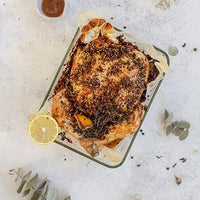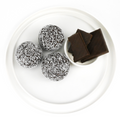Smoothie bowls – they’re colourful, delicious and look damn good on Instagram. However, they might not always be the healthiest option on the menu.

For one, they can be a minefield if you’re watching your carb and sugar intake. Consider an acai bowl for example. A typical recipe would be:
A frozen acai pre-mix often contains pulp, cane sugar and agave syrup. This has about 42g of carbs – made up of 28g of sugar. Not all mixes are created equal, so it’s important to check the pack!
- 100ml apple juice. A no-added sugar version still contains 10g of carbs, made up entirely of sugar.
- 100g frozen blueberries. Comes in at around 11g of carbs – entirely sugar.
- 1 small banana, sliced to serve. This has around 17g of carbs, including 14g of sugar.
- Granola, to serve. One of the most popular “healthy” versions contains 32g of carbs and 9g of sugar per 50g serve.
Eeek. While most of the carbs and sugars come from natural, not refined sources – this is still 112g of carbs and 72g of sugar in one “healthy” sitting. If you’re looking to slim down, this bowl also notches up over 600 calories – without any significant protein hit. There’s no reason to be afraid of fruit – but it still needs to be consumed in moderation.
So what’s the alternative?
Smoothie bowl lovers, don’t fret – they aren’t a no-go zone if you follow a few simple guidelines.
Firstly, watch what’s in your base. “If using a frozen smoothie base, like acai, dragon fruit or berries, make sure it’s 100% fruit pulp. Many have added sugars, syrups and chemical additives. This way you can control any extra sugar intake,” points out THR1VE Nutritionist Shannon Young. “If using fresh fruit as your base, watch your portion size – half a cup of fruit is plenty. You could also try blending in fresh spinach or greens to get in an extra serve of vegetables.”
Also, watch what you blend your fruit with. Swap out juices and extra fruit for nut milks or coconut water to reduce the sugar content – just make sure they’re unsweetened. Try topping with raw nuts or a low-sugar, gluten-free granola, too.
A THR1VE favourite is Pitaya Plus 100% dragon fruit pulp, mixed with a scoop of our THR1VE vanilla protein and half a cup of almond milk. We top it with just a sprinkle of THR1VE granola, and add 4-6 slices of banana if desired. This has around 22g of carbs – made up of 17g of natural sugar. It comes in at around 360 calories. A vast difference from the carb, sugar and calorie-packed acai favourite.
Also remember that timing is key. “If you’re having a higher-carb smoothie bowl, try to have it within three hours of a workout – preferably after waiting an hour. This is a strategic way to burn through the carbs and helps with muscle recovery,” says Young. Essentially, a post-workout smoothie bowl can still be on the menu, but the ingredients do matter!

























